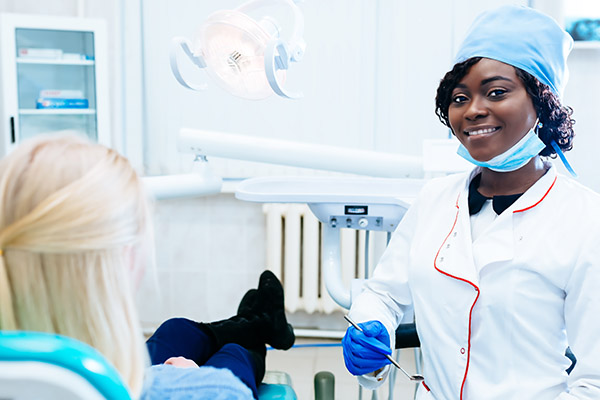 A periodontist can help to reverse or manage gum disease. Medically termed periodontal disease, gum disease is an infection of gum tissues caused by oral bacteria. These microorganisms feast on sugars from foods and beverages consumed, and they form plaque.
A periodontist can help to reverse or manage gum disease. Medically termed periodontal disease, gum disease is an infection of gum tissues caused by oral bacteria. These microorganisms feast on sugars from foods and beverages consumed, and they form plaque.
Plaque is a sticky film that coats teeth and gum surfaces, and it creates the mushy feeling you have in your mouth in the mornings or after a nap. It contains oral bacteria and acids that damage teeth structures.
Plaque can be removed from tooth surfaces by brushing and flossing, but it calcifies into tartar when left on teeth surfaces for a few days. Our periodontist recommends brushing twice daily and flossing once daily to protect against issues like gum disease. Tartar and plaque build up at the base of teeth, and they can make their way into gum pockets, infecting the tissues there.
The immune system’s response to the infection is what leads to irritated and inflamed gum tissues. Left untreated, the infection will damage bone structures in the mouth and gum tissues, leading to teeth falling out of the mouth and other issues.
Everything you should know about gum disease from a periodontist
Gum disease occurs in two distinct stages: gingivitis and periodontitis. The first stage can be reversed by improving your oral hygiene, regular teeth cleanings, and, sometimes, deep teeth cleaning. It often comes with symptoms like receding gums, sensitive gums that bleed easily, and purplish gums.
Periodontitis is a chronic condition that cannot be reversed. At this stage, all a dentist can do is slow down the infection and address damage caused by it. Symptoms of periodontitis include pus coming out from the base of teeth, loose teeth, and spaces developing between teeth.
Gum disease is caused by the bacteria in plaque and tartar infecting gum tissues, but other factors can increase a person’s risk of infection. These include:
- Smoking
- Genetics
- Obesity
- Vitamin D deficiencies
- Health issues like diabetes or immune system disorders
- Hormonal changes
Preventing gum disease
Let us take a look at some of the things patients can do to protect their teeth and gums against gum disease:
- Oral hygiene: Good oral hygiene goes a long way when it comes to keeping gum tissues healthy. Brush twice a day, making sure one of these times is right before going to bed. This helps to remove plaque that built up on teeth during the day. Flossing once a day helps to keep interdental spaces plaque-free, while an antibacterial mouthwash can help to control bacteria in the mouth
- Teeth cleanings: Regular teeth cleanings are essential since tartar cannot be removed by brushing. It protects teeth against tooth decay and gum disease
- Stop bad habits: Habits like smoking or recreational use increase a person’s risk of developing gum disease
We provide treatments for gum disease
Our periodontist has lots of experience improving the oral health of patients with gum disease. Call or visit our Summit clinic to set up an appointment.
Request an appointment or call Summit Periodontics & Dental Implants at 908-219-6664 for an appointment in our Summit office.
Related Posts
People who are seeking healthy gums but are dealing with challenges with gingivitis can see an expert periodontist, a dental professional who has studied the structures that support the teeth. These include the gums, the jawbone itself, and the ligaments that help hold the teeth in place.Periodontists are trained dentists who focus their attention on…
The most common procedure that a periodontist performs is removing plaque and tartar from their patients’ teeth. This procedure helps to remove the bacterial infection that causes gum disease and its symptoms. With time, monitoring, and a few follow-up procedures, the periodontist can restore the health of their patient’s teeth and gums. In the following…
During a visit to the periodontist, the dental professional will reiterate the importance of taking proper care of your gums and teeth. Only a few people realize how important good oral health is to overall wellness. Since the mouth is the primary entry point into the body, bacteria can spread to other parts, putting you…
